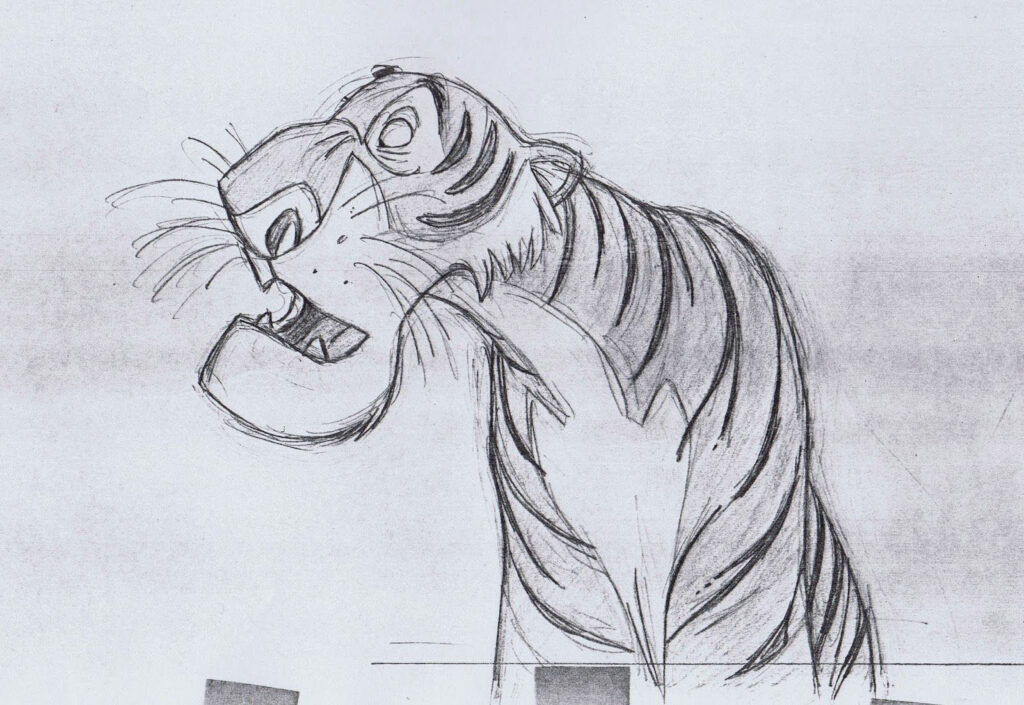
Walt Disney’s Jungle Book was, in my memory, the first animated film I saw in a cinema. I was still a child, but I still remember perfectly the enormous impression it made on me, which never left me again, probably influencing – more or less unconsciously – the choice I made much later to dedicate myself to this profession.
And also much later, when I had already decided that this would be my stable occupation in life, I “discovered” the artist who was the author behind many of the most memorable scenes of this film, all well etched forever in my mind.
I remember it because this, more than others from the great “dream factory” of Burbank, is a film that, much more than on the narration, on the beauty of the images, on the plot, on the colors, on the music, is based on animation. It’s pure animation.
Emotions, fun, dreams, adventure, drama, are all conveyed by animation. A strictly hand-drawn animation, by the way, a substantial part of which created by an authentic genius of this art, whose name was Milt Kahl.
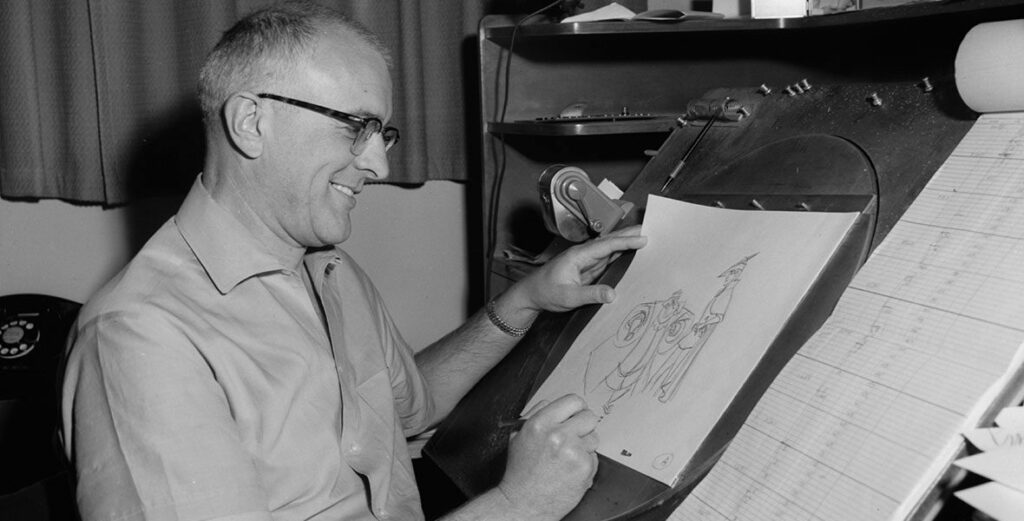
I had unconsciously perceived this special and unique dimension already as a simple spectator, a child who at the time, when asked what he wanted to be when he grew up, answered without hesitation “the truck driver”. (Yes, I really loved big trucks!)
Then when, now an adult and already active in the profession, I finally had the opportunity to give a name, an identity, a human body to the author of those wonderful drawings, I underwent the same process of identification and emotional involvement that I described in a previous article about Dürer and Mozart/Kremer: I was aware that a human being, by his hand, maneuvering a pencil very similar to mine, had traced those drawings which, with a “magical” and ineffable process, had changed those signs in a “living” character, with his own personality, his own thoughts, his own emotions.
And this without the drawing having anything to do with a “real” tiger, in the flesh, today we would call it “photorealistic”. (BTW, how much the results of certain AI processing pretends some kind of “photorealism”!)
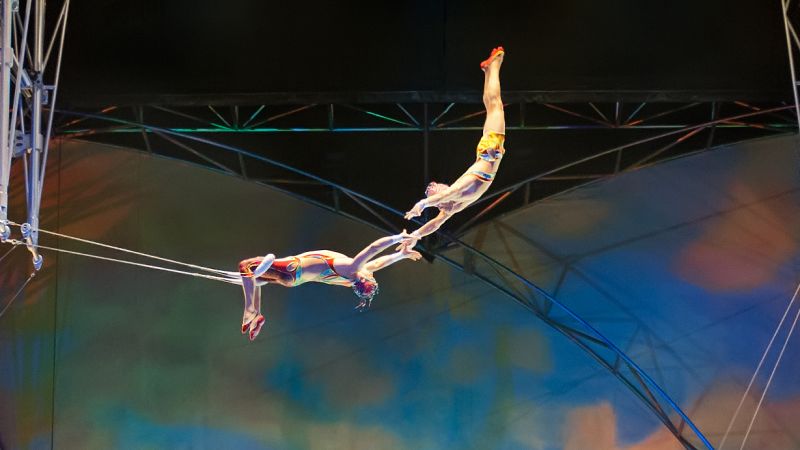
Il Maestro Virtuoso
But our instinctive admiration for the artist as such is not only a spiritual, emotional question, but also an eminently technical fact.
Actually, we know from the Ancients how the terms “Ars” and “Techne” are intimately interconnected, so much so that one cannot be defined in the absence of the other.
The circus show is a perfect representation of this assumption. Here the “work of art” is as such absent, or rather, the artistic act (because this is always what it is about) has no communicative, informative, cultural ambition in the broad sense, but relies on pure talent in execution of a certain “exercise”, or performance, to complete which we know that the artist required years of effort, daily practice, rigorous discipline and total dedication, as well as a strong innate predisposition (or talent). We admire the elegance, the apparent lightness and ease, and the great daring, for example, of a trapeze vault at a height of ten or twenty metres. Movement communicates beauty to us in its own way, and certainly transmits emotions to us, but what we “admire” in this case is not the work itself, but the fact that it is presented to us (performed before our eyes) by a human being in every way similar to us, if it weren’t for that very particular and inimitable talent.
It is the same mechanism that leads us to admire some great musical performers, such as Gidon Kremer of whom we spoke above, beyond the beauty and aesthetic and cultural depth of the piece played: an aspect of the artistic performance which, in the musical language we use to call “virtuosity”.
It is a component of our perception of art that is present, to a greater or lesser extent, in all the arts, and is completely indivisible from them.
Virtuosity is the ability that, for example, Dürer exhibits in distributing colors on the canvas with unparalleled mastery, capturing and giving an expressive way to every shade of light and shadow.
And “virtuosity” is one of the components of the admiration that, particularly as animators, we feel for the inimitable sign of Milt Khal, for his ability to portray with a few strokes, apparently without effort, the soul, the thought, the illusion of life of a completely imaginary character.
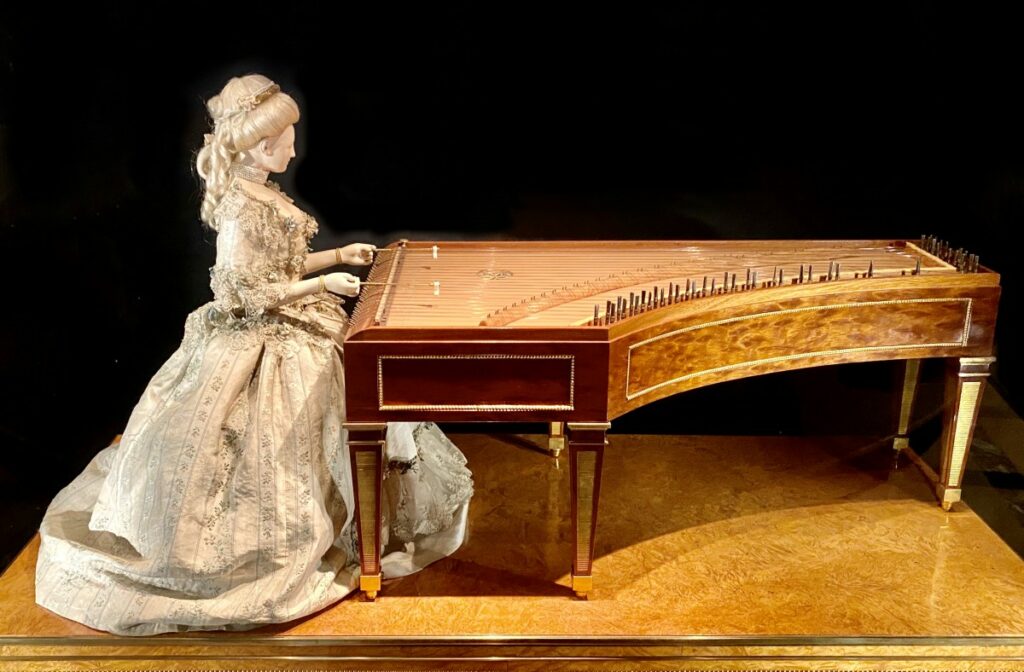
The “virtuosity” component is a totally and rigorously human result, which any attempt at “artificialization” is by definition destined to fail.
Of a “machine” we can admire the cleverness of the project, the perfection of the internal mechanism, the prodigious processing power. And the product that this machine, as it is “generative”, can arouse our wonder and amazement, as does an eighteenth-century automaton capable of “playing” even perfectly, once the clockwork mechanism that moves it is wound, a Mozartian piece.
But we can never give that product the value, or even the name, of “art”.
Body and Soul
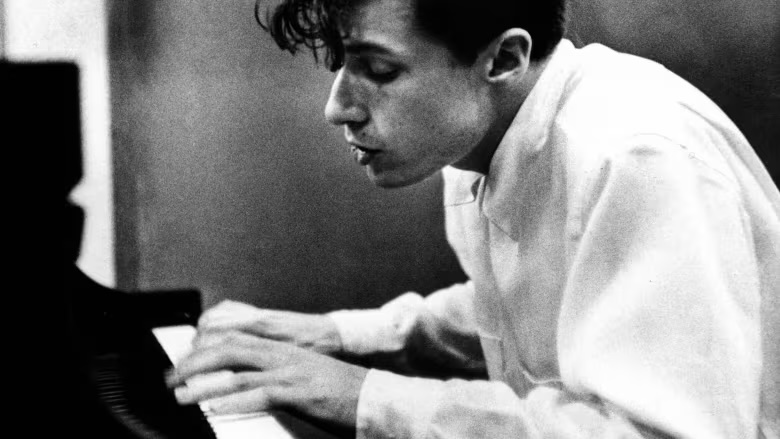
I want to add another element to this subject – a topic which I will discuss in more detail later because it is inextricably linked to the daily practice of every art form and an important part of the personal experience of every “professional” artist, also in our sector – an even more “impalpable” but essential aspect of the eminently human contribution to the creation (“generation”) of a work of genius, beyond virtuosity and execution: talent.
It is an inflated term, often used inappropriately, especially in the commercial context, when in fact it is something very specific and qualifying, in this area.
Below I report the definition given by some dictionaries:
Cambridge Dictionary:
Talent: “A natural skill or ability to be good at something, especially without being taught”
Collins:
Talent: “The natural ability to do something well.”
Britannica:
Talent: “A special ability that allows someone to do something well”
Wikipedia:
“A talent (or aptitude) is the natural ability to do something better than most people. Talent is often confused with skill. We can develop and improve skill but not talent.”
It is curious that the most focused definition in my opinion is given by Wikipedia, while the “classic” dictionaries limit themselves to a more generic and conventional definition.
In any case, here we are at a much deeper level than the “virtuosity” I spoke about above, which as a concept could be compared to the term “skill”. This is an aspect that still contains something “mechanical”, that is, the ability to reach or approach perfection in the execution of a work, and only the knowledge that it is a human being who generates this perfection gives it, in our eyes, a value. For a “machine”, however, it is a performance that we take for granted, inherent in the very definition of “artificial generation”, and which does not arouse any amazement or admiration for the generative process: if I, using a generative AI application, obtain a certain result, you too, using the same application, will be able to obtain the same result, or, in any case, a result of totally similar “value”.
Talent, on the other hand, is an element closely linked to the human factor: only a human being can develop and express more or less “talent” for the creation of something, in particular a work of art. You, thanks to your talent, can animate a certain character in a scene, and obtain a result of a certain “value”. I, with less talent, can animate the same character in the same scene, but my result will certainly be different, and above all of a different “value” than yours.
No “machine” will ever be able to express “talent” as such, precisely because of the very definition of “artificial“.
I still ask for help with the definition of a couple of dictionaries:
Oxford:
Artificial: “Produced to copy something natural”
Britannica:
Artificial: “Not natural or real: made, produced, or done to seem like something natural”
The process therefore is and remains a simulation, i.e. the simulation of the presence of a human mind (his “intelligence”). The product of this process, however perfect or surprising it may be, is and remains “alien”, detached from the human agent who initiated this process. For this reason, in the case of a work of art, it can communicate its content to us, but it will never be able to tell us anything about the soul, the talent of the author, because, ultimately, the author is not human, and therefore it can have neither talent nor, much less, whatever it is, “soul”.
Artificial Luddism
At this point we can begin to understand the devastating damage that this voracious and overflowing technology could cause in our social fabric in general, and in our delicate and restricted professional sector in particular.
I will not dwell on the problems of generating ideas, developing content, and disseminating news, because that would be too far outside the scope of these articles. Nor, remaining in the field of the image, on how the reproduction and interpretation of reality can be replaced by its “plausible falsification”, with the very serious danger of relativizing the factual objectivity, a process that has already affected the social fabric under the form of various conspiracy and denialist theories, which can only have a further, powerful leap in quantity and quality of damage.
In reality, I would like to add, lest I be seen as a 21st century “Luddite”, this technology in itself is not the “devil”, not unlike many other “extreme” technologies of the past, for example nuclear technology. There are areas of research and application that are already benefiting from it, bringing results of great relevance for science, knowledge, culture, and the general progress of humanity, in the most disparate sectors.
To give a recent example, totally inserted in a historical, humanistic and cultural discourse:
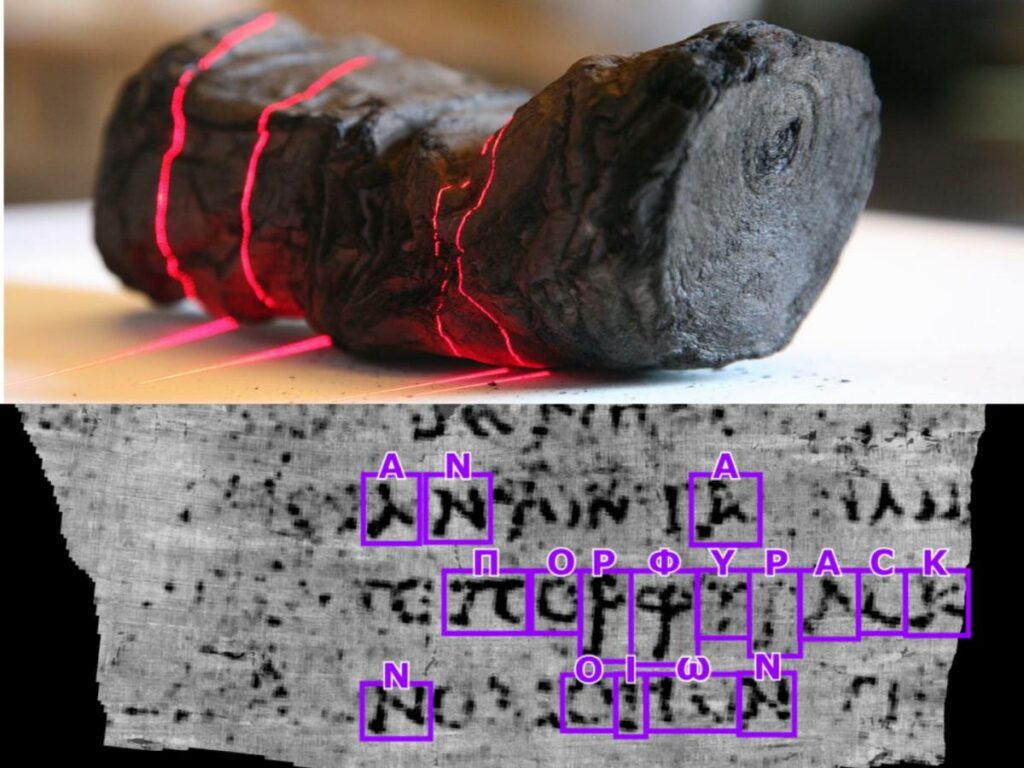
Hundreds of papyrus scrolls in the ancient city of Hercolaneum were preserved after the eruption of Mount Vesuvius in C.E. 79, constituting the only intact Greco-Roman library known to survive from antiquity. For thousands of years no one could open them without doing irreparable damage. Now researchers are using advanced imaging technologies and special AI machine learning to reveal writings that have remained undetectable until today (Thomas Weber – Scientific American – April 2024).
This does not mean, however, that there are not serious risks, just as in the nuclear sector, in addition to scientific, medical and energy uses, there are military ones, all of which are frightening, or even crazy and criminal.
To limit myself to the artistic sphere, the damage could involve not so much the generations now operational, already in possession of more or less valid experience gained in the field, who could simply find a “convenient” and advantageous way of carrying out their activity, but rather the younger generations, and future ones, to the extent that they lose the stimulus and motivation to equip themselves with the efficient and effective technical means to express their ideas, to reshape the world, to create the image of themselves.
As an “old” animator, for example, I have always been impressed by how many young artists, often very talented, simply don’t know the correct grip on a pencil.
This phenomenon almost certainly derives from the fact that starting from primary schools we are progressively losing the use, and therefore the related ability, of handling traditional writing instruments, i.e. pen and paper, in favor of various devices with keyboard or interactive screen. In essence, the basic technique of writing, i.e. how to hold a pencil, a ballpoint pen or, even worse, a fountain pen, is no longer taught or learned. And I assure you that with certain postures it is doubly more difficult and tiring to achieve excellent results in traditional animation, even drawing with a graphic pen in a digital system (indeed, perhaps even worse, since it requires even more rigorous control of the stylus).
This is a minimal example, however I wonder how much the new generations could lose in terms of creative ability given the exhilarating ease of producing – or artificially generating – a synthetic image in a few minutes, impressive, but also fatally similar to that of anyone other? How much will they lose in terms of vision, interpretation, reflection on reality (and on the imagination, which of the reality is the distorting and informing mirror)?
I leave these reasonings open, and return to what has been said so far on the essentially and exclusively human character of artistic creation.
Aura in the Time of Cholera
All this is nothing other than what we defined above, with Benjamin, as the “aura” of the artwork, of the same nature as that which moves us and excites us in front of a beautiful painting or listening to a great piece of music.
And we have seen how this sort of emotional “communication channel” between the artist and his audience is only possible with the presence, at one end and the other of the thread (the work of art) of (at least) two human beings, no matter if coexisting in time, place, culture, experience.
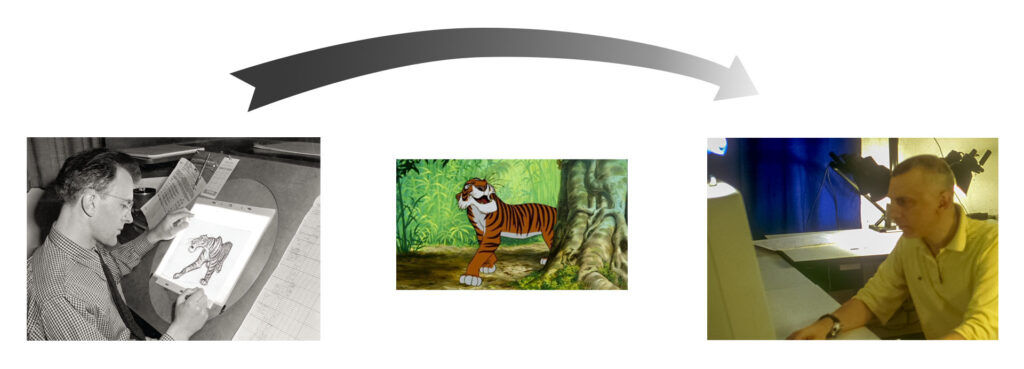
It is precisely the work of art that acts as a bridge, as a conductor, the “fiber-optic cable” that conveys this flow of information between the “creator” and its recipient(s), which ultimately constitutes, in the consciousness of the “receiving” individual, that thing which we call “emotion”, which can be aesthetic, cognitive, moral, even ethical. Or all of these things together.
At the beginning we posed the problem of how we could, or would like, to define ourselves as animators: whether we are “artists” or rather professionals, or even just workers – executors like any other in a factory (and show business IS nothing else than a big “factory”).
Obviously this is a perception that must be completely individual, we could simply feel like executors who provide a certain technical ability to realize an idea, a narrative, a vision belonging to someone different from us. And being perfectly comfortable like this. Being just “tools”, certainly skilled and qualified, but alien to the original “GENERATION” of the idea, the project, the final product.
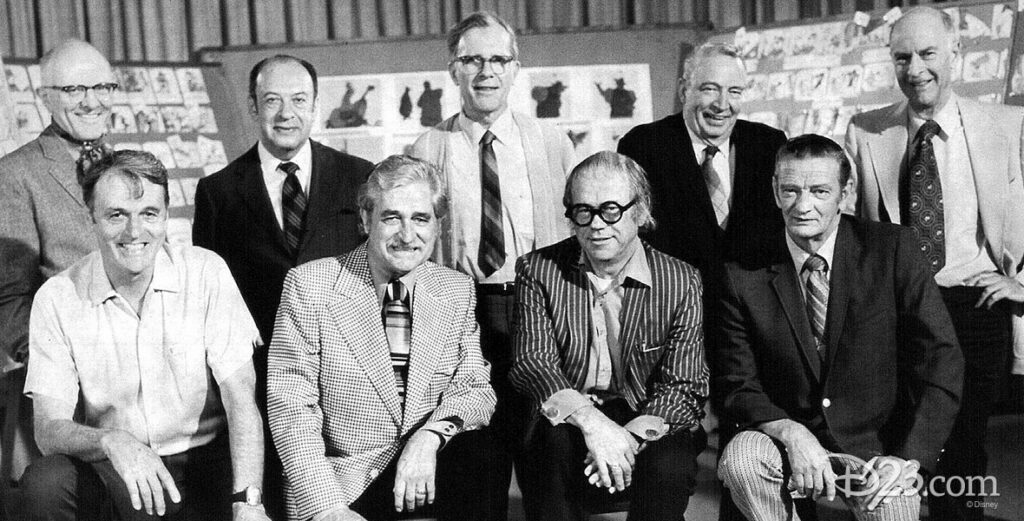
However, for many of us things are different: Milt Kahl, even though he was employed all his life in such a structured and large “factory” as Disney was in the golden years, was certainly not a simple performer, but he was an authentic artist (for many of us truly a genius in his field) who left an unmistakable and indelible mark on the history of this industry and art form. The other eight of the famous Disney’s “Nine Old Men” group were certainly not far from his genius, and so were many great animators, inside and outside Disney, at all times.
This is the reason why I have taken the risk of suggesting you to ask yourselves, your conscience, what could have really pushed you (and us) to undertake this demanding profession, and not any other – perhaps a commoner one, paid more, more coveted, more recognized.
There may be more or less favorable external circumstances, for example a chance meeting, acquaintances in the business, being in the right place at the right time, even just a moment of madness. But beyond this, we all know that this is an eminently VOCATIONAL profession. Like the musician, like the doctor, like the priest, like the athlete.
In other words, there is an indefinable force that, sometimes blatant and unmistakable, other times completely secret and unconscious, pushes us, even forcing us to effort and sacrifice, in that direction, precisely in that direction, and not any other than that.
This is nothing else than that human component that makes us an irreplaceable uniquenesses, what makes us what we are, different from any other artist around us, and which makes our vision of the world equally unique and different, completely original. And therefore very difficult, if not even impossible, to be reproduced by any “artificial” system.
It is the accumulation, the stratigraphic sediments of all our individual history, of our experience, of our knowledge, of our studies, skills, talent, which contributes in a unique and irreproducible way to creating our specific sign, our unmistakable imprint on reality and imagination.
And this is exactly what no Artificial Intelligence will ever, by definition, be able to re-produce, let alone produce. Or “generate”.
Here is therefore the key with which we can face the challenges that loom on the horizon, certainly not with serenity, but at least with a little clarity and realism, and hopefully with a little less anguish. That is, finding within ourselves the true uniqueness and specificity of our work, what makes us irreplaceable in the face of increasingly automated and standardized production; and to do so, as we will see later, we will have to go to the primary roots of what we have defined, rightly, as a “vocation”.
But I wouldn’t want to spoil too much, let’s return for a moment right to heart of the great challenge that this technological and cultural process is imposing, in general, to almost every productive and creative sector of Western societies, as we will see in the next article:
10 – Entropy and Resistance: “Apocalypse Postponed?”
